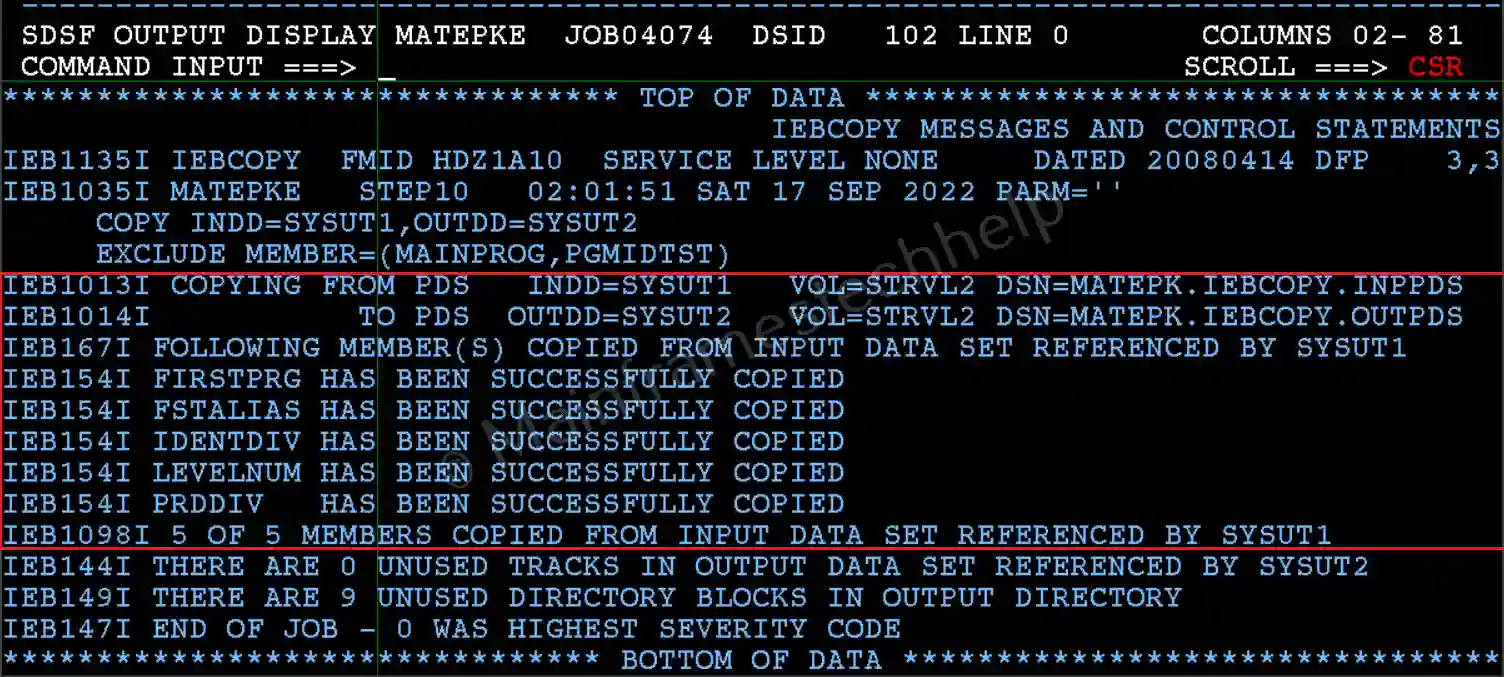IEBCOPY EXCLUDE
The EXCLUDE statement excludes the members from the copy, unload, or load operation. It always comes with a COPY statement. An EXCLUDE statement cannot appear with a SELECT, compress, or COPYGRP.
Syntax -
//SYSIN DD *
[label] EXCLUDE MEMBER=[(]name1[,name2][,...][)]
/*- MEMBER=[(]name1[, name2][,...][)] - Specifies members on the input PDS that should exclude while copying, unloading, or loading to the output PDS.
Practical Example -
Scenario - Excluding two members while copying from one PDS to another.
Input -

JCL -
----+----1----+----2----+----3----+----4----+----5----+
//MATEPKE JOB (123),'MTH',CLASS=A,MSGCLASS=A,MSGLEVEL=(1,1),
// NOTIFY=&SYSUID
//***********************************************************
//* EXCLIDING MEMBERS WHILE COPY FROM ONE PDS TO ANOTHER
//***********************************************************
//STEP10 EXEC PGM=IEBCOPY
//SYSPRINT DD SYSOUT=*
//SYSOUT DD SYSOUT=*
//SYSDUMP DD SYSOUT=*
//SYSUT1 DD DSN=MATEPK.IEBCOPY.INPPDS,DISP=SHR
//SYSUT2 DD DSN=MATEPK.IEBCOPY.OUTPDS,DISP=OLD
//SYSIN DD *
COPY INDD=SYSUT1,OUTDD=SYSUT2
EXCLUDE MEMBER=(MAINPROG,PGMIDTST)
/* Job Status -

Output -

Explaining Example -
- SYSUT1 DD DSN=MATEPK.IEBCOPY.INPLOAD,.. - Specifies the input load PDS.
- SYSUT2 DD DSN=MATEPK.IEBCOPY.OUTLOAD,.. - Specifies the output load PDS.
- COPY INDD=SYSUT1,OUTDD=SYSUT2
EXCLUDE MEMBER=(MAINPROG,PGMIDTST) - Copies all other members except MAINPROG, PGMIDTST from SYSUT1 to SYSUT2.
